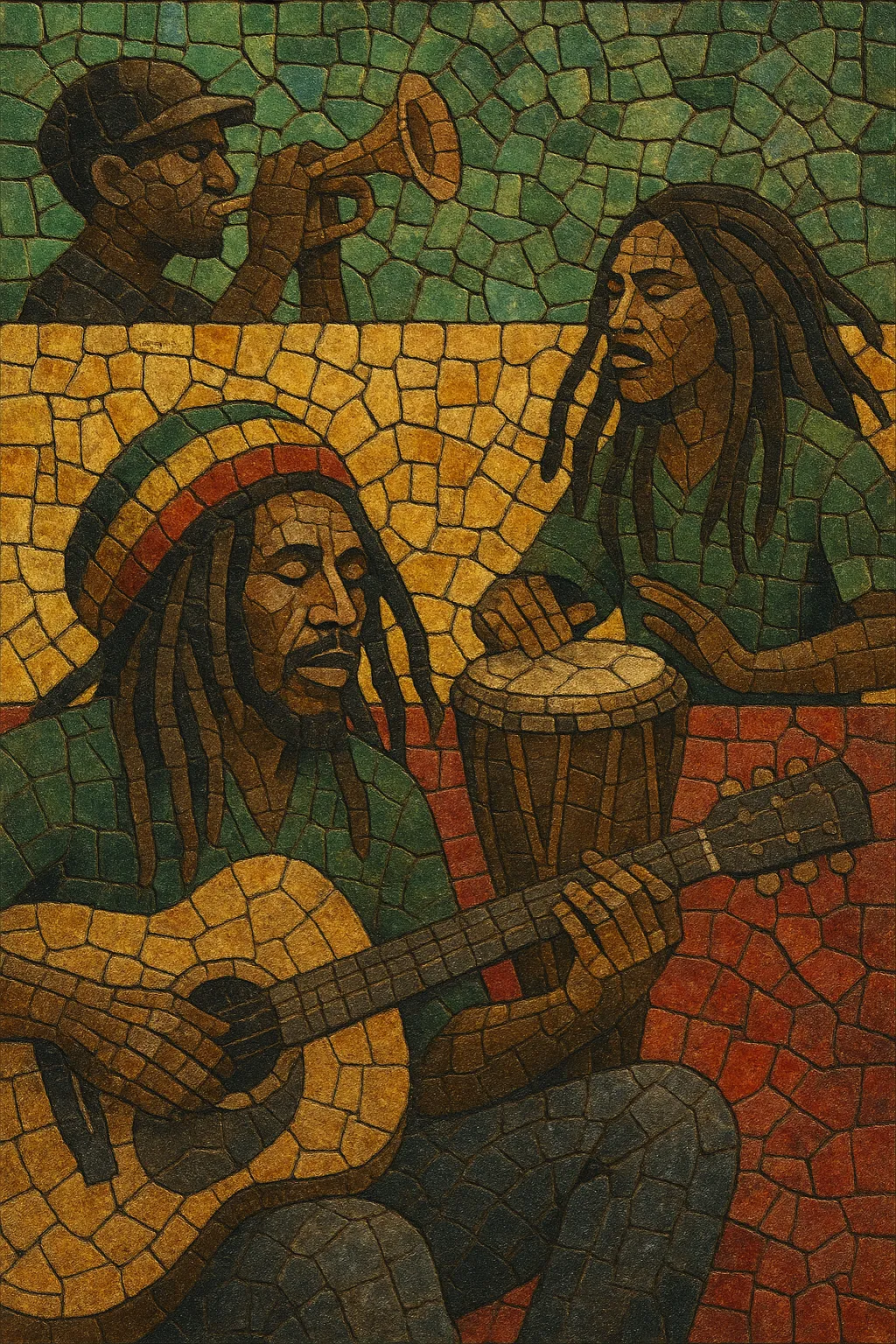Reggae is a popular music genre from Jamaica characterized by a laid-back, syncopated groove, prominent bass lines, and steady offbeat “skank” guitar or keyboard chords. The rhythmic core often emphasizes the third beat in a bar (the “one drop”), creating a spacious, rolling feel that foregrounds bass and drums.
Typical instrumentation includes drum kit, electric bass, rhythm and lead guitars, keyboards/organ (notably the Hammond and the percussive "bubble"), and often horn sections. Tempos generally sit around 70–80 BPM (or 140–160 BPM felt in half-time), allowing vocals to breathe and messages to be clearly delivered.
Lyrically, reggae ranges from love songs and everyday storytelling to incisive social commentary, resistance, and spirituality, with Rastafarian culture and language (e.g., “I and I”) playing a central role in many classic recordings. Studio production techniques—spring reverbs, tape delays, and creative mixing—became signature elements, especially through dub versions that strip down and reimagine tracks.
Reggae emerged in Jamaica in the late 1960s as a slower, heavier evolution of ska and rocksteady. Building on mento and calypso song traditions and deeply informed by African-derived drumming (Nyahbinghi), Jamaican musicians fused American rhythm & blues and soul with local sound system culture. By 1968–69, the distinct one‑drop rhythm and emphasis on bass defined a new sound increasingly called “reggay,” then standardized as reggae.
The 1970s saw the rise of roots reggae, where spiritual consciousness, social justice, and Rastafarian themes came to the fore. Artists and bands such as Bob Marley & The Wailers, Burning Spear, and Culture brought reggae global recognition. In parallel, engineers and producers like King Tubby and Lee “Scratch” Perry pioneered dub—deconstructing mixes, foregrounding drums and bass, and using echo and reverb as instruments—reshaping studio practice worldwide.
The early 1980s introduced digital rhythms, famously the “Sleng Teng” riddim, catalyzing dancehall’s rise with toasting and more stripped, punchy productions. Reggae’s diaspora communities, especially in the UK, nurtured lovers rock and later influenced UK bass culture. Reggae’s rhythmic DNA routed into hip hop, jungle, and drum & bass through sound system practices, MC culture, and dub engineering.
Reggae continues to evolve through modern roots revivals, collaborations with hip hop, pop, and EDM, and the spread of global reggae scenes. Its legacy remains audible in dancehall, reggaeton, dubstep, and beyond—where heavy bass, offbeat accents, and dub effects testify to reggae’s enduring studio and rhythmic innovations.


